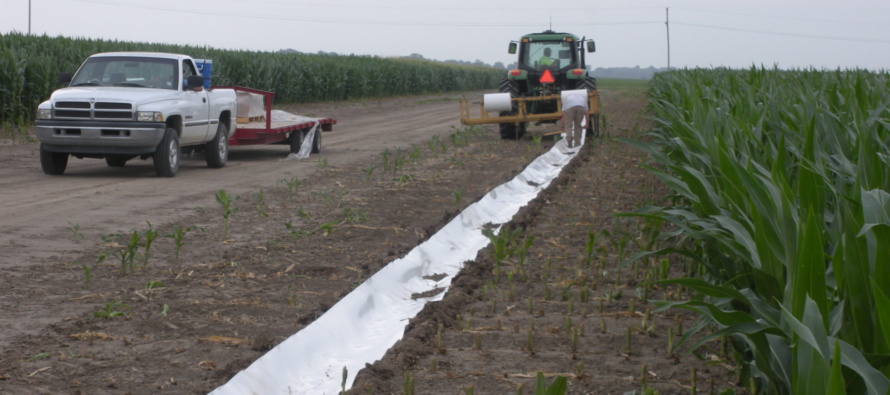Cotton Irrigation Termination

We have reached the time of year when irrigation is typically terminated in many areas of the state. Our recommendation for irrigation termination is as follows. For furrow irrigated fields, irrigation should be terminated at first cracked boll. In many areas of the state, cotton began to open within the last week, thus in most cases furrow irrigation could/should be terminated. If adequate moisture is present in the soil profile, and your crop has open bolls – terminate irrigation. However, if you are in an area where is has been dry/not irrigated for an extended period of time and your crop is not opening as of yet – a final furrow irrigation application is recommended. In these situations, be cautious of delaying irrigation (when no rainfall has been received) in order to facilitate bolls opening in order to justify terminating irrigation. Our data indicates that irrigation may be terminated as much as two weeks prior to first cracked boll; however, in our research we have always received some appreciable rainfall between two weeks prior to first cracked boll and three weeks after first cracked boll. Long story short – if you lack moisture in the soil profile and your crop is not open – make one final furrow irrigation.
For pivot irrigated fields – our recommendation is to apply a final irrigation up to ten days after first cracked boll when you are lacking moisture in the soil profile. The reason for the 10 day discrepancy between furrow irrigation and pivot irrigation is due to the amount of water delivered to the crop in an irrigation event. It in not uncommon for up to 3 acre-inches of water to be delivered when furrow irrigating whereas 0.5″ – 1.0″ per acre are typically delivered when using pivot irrigation.
We do not recommend irrigating past these times as our data has not shown yield or fiber quality gains from doing so. In addition, this becomes a risk/reward situation. There are numerous pathogens that can cause hardlock and/or boll rot. When irrigating as bolls are opening, you are providing moisture in the crop canopy which can enhance the environment for these plant pathogens to cause hardlock and/or bollrot. The disease triangle suggests that you need the host (cotton), the pathogen (likely present), and the environment (which you enhance or make more favorable by adding additional moisture into the crop canopy) in order for a disease to potentially be problematic.
Generally speaking, ~40-45% of the total crop yield is from nodes 5 – 8/9. These are the bolls that are likely most susceptible to bollrot and/or hardlock which illustrates why we should try to avoid the onset of these problems at all costs. The USDA is predicting a yield of 1,211 pounds per acre for Mississippi cotton in 2018. While only a prediction, this illustrates the crop we currently have in the field. If realized, this would be the 3rd highest yield on record and would also be the 4th year in the past 7 that Mississippi growers have produced in excess of 1,200 pounds of lint per acre.





Let me tell You a sad story ! There are no comments yet, but You can be first one to comment this article.
Write a comment